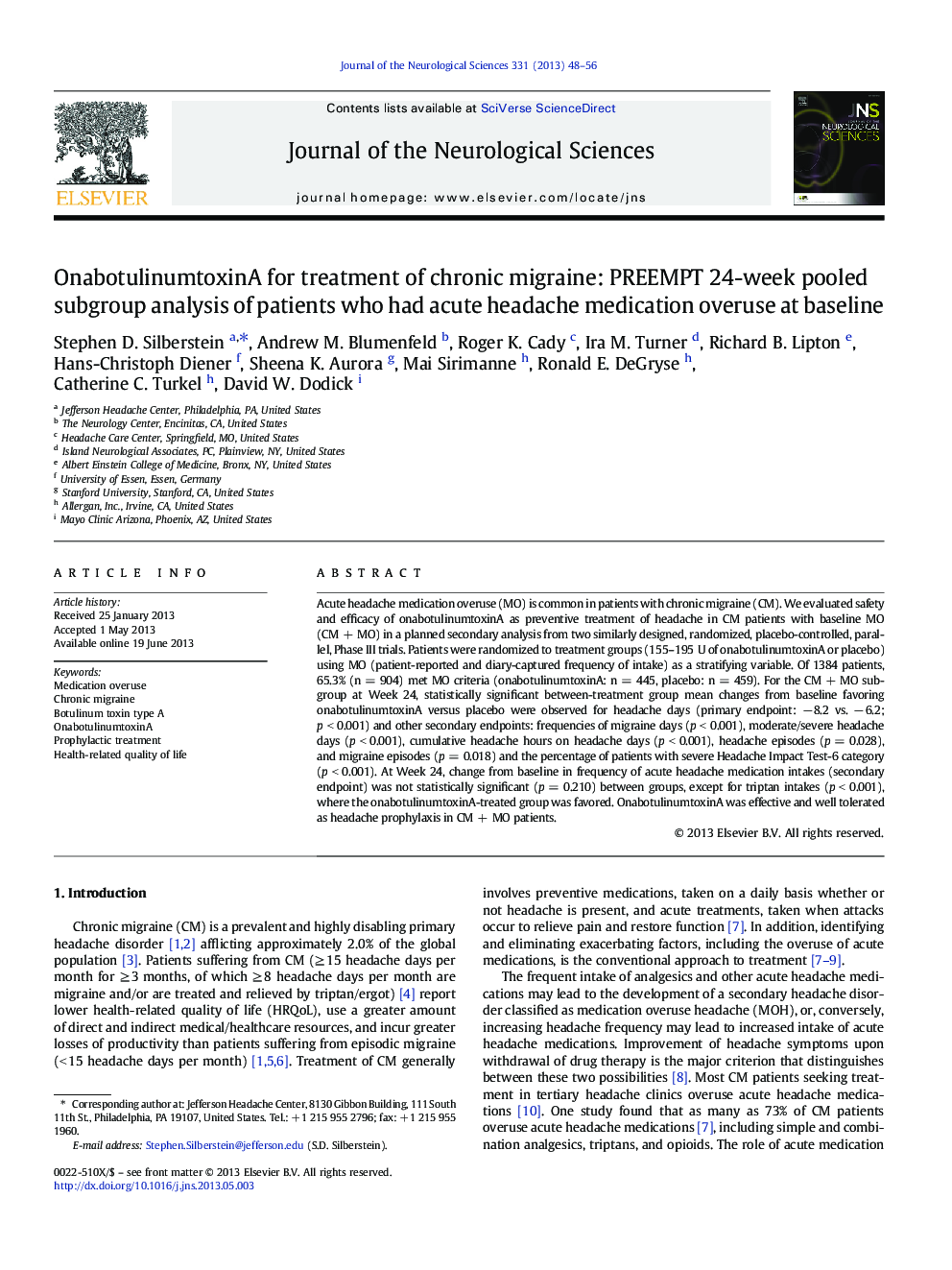| Article ID | Journal | Published Year | Pages | File Type |
|---|---|---|---|---|
| 8279498 | Journal of the Neurological Sciences | 2013 | 9 Pages |
Abstract
Acute headache medication overuse (MO) is common in patients with chronic migraine (CM). We evaluated safety and efficacy of onabotulinumtoxinA as preventive treatment of headache in CM patients with baseline MO (CM + MO) in a planned secondary analysis from two similarly designed, randomized, placebo-controlled, parallel, Phase III trials. Patients were randomized to treatment groups (155-195 U of onabotulinumtoxinA or placebo) using MO (patient-reported and diary-captured frequency of intake) as a stratifying variable. Of 1384 patients, 65.3% (n = 904) met MO criteria (onabotulinumtoxinA: n = 445, placebo: n = 459). For the CM + MO subgroup at Week 24, statistically significant between-treatment group mean changes from baseline favoring onabotulinumtoxinA versus placebo were observed for headache days (primary endpoint: â 8.2 vs. â 6.2; p < 0.001) and other secondary endpoints: frequencies of migraine days (p < 0.001), moderate/severe headache days (p < 0.001), cumulative headache hours on headache days (p < 0.001), headache episodes (p = 0.028), and migraine episodes (p = 0.018) and the percentage of patients with severe Headache Impact Test-6 category (p < 0.001). At Week 24, change from baseline in frequency of acute headache medication intakes (secondary endpoint) was not statistically significant (p = 0.210) between groups, except for triptan intakes (p < 0.001), where the onabotulinumtoxinA-treated group was favored. OnabotulinumtoxinA was effective and well tolerated as headache prophylaxis in CM + MO patients.
Keywords
Related Topics
Life Sciences
Biochemistry, Genetics and Molecular Biology
Ageing
Authors
Stephen D. Silberstein, Andrew M. Blumenfeld, Roger K. Cady, Ira M. Turner, Richard B. Lipton, Hans-Christoph Diener, Sheena K. Aurora, Mai Sirimanne, Ronald E. DeGryse, Catherine C. Turkel, David W. Dodick,
